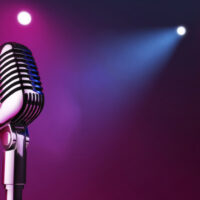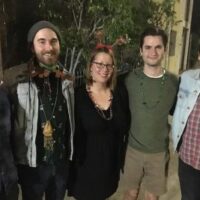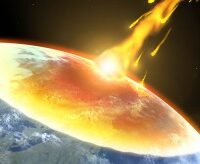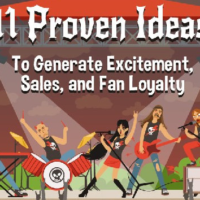Building a Brand through Livestreaming
This interview was original conducted in 2017.
John Petrocelli is CEO and founder of Bulldog DM, the world’s first live streaming agency. Bulldog DM helps brands, agencies, content owners and platforms deliver impactful live engagements with an emphasis on live streamed music to achieve optimal reach, engagement and metrics. The Bulldog DM team has facilitated the digital experience for Vive Latino, American Express Unstaged, Taco Bell Feed the Beat, Outside Lands, Bonnaroo and works with brands like Coca-Cola, Facebook, YouTube, Mars, Nestle, HP and Turner. John has been instrumental in helping major media companies establish optimal strategies to both distribute and monetize their digital content for over 15 years and has worked with the NBA, NHL, NBC/Universal, Disney, Sony, VEVO, Twitter, Universal Music Group, Microsoft and the late music icon Prince. He helped Prince develop the first major artist owned and operated direct-to-consumer digital music store and ticketing platform that garnered Prince a Billboard Award for Best Use of Technology by an Artist and also a Webby Award. Previously John was VP, Sales and Bus Development at AEG Digital Media after selling his company to AEG in 2009, where he led live streaming engagements for Coachella, Bonnaroo, Lollapalooza, Austin City Limits, Rock In Rio, the Grammys, the Oscars, and the Masters. His previous companies were acquired by Google and Akamai.

John talked to us about how the live streaming market has evolved during the last decade and how brands are using it to deliver more engaging live music experiences. He also shared some ways bands just starting out can use live video to spread the word about their music and build their brands.
MC:
Thanks for talking, John. How did you end up founding Bulldog DM?
JP:
At the end of 2009, my live streaming services company was acquired by AEG. Within AEG, I was able to quickly build an externally facing yet market leading entity that powered most of the live streaming experiences that consumers or viewers or fans would have watched anywhere in the world. And that ran the gamut from the Grammys, Oscars and Masters, to TED Conference, and E3.
We executed all of MTV’s live streamed experiences that were either dedicated digital events, like the Spike Video Game awards, or they were the precursor to the broadcast like the MTV VMAs Black Carpet build, or the Black Carpet arrival show. Prior and through the acquisition, I had started a dialogue with YouTube about why this might be an interesting business for them as one: a way to drive a large live audience to experiences, and two: then to expose the audience to all the videos that live on the YouTube platform post event.
So, the planets kind of aligned. We powered an Alicia Keys concert at an AEG venue in New York CIty that was presented to the consumer on YouTube by American Express, and it was more of a proof of concept. YouTube came back to me and said, “This is interesting business. We want to pursue it.”
So, we moved into an overall agreement with Google and with YouTube. With YouTube, we worked on experiences like Coachella, Bonnaroo, Rockin’ Rio, Austin City Limits, The Royal Wedding, product launches and movie premieres, etc. And as the market started to grow, we started to see massive adoption on mobile handsets.
For premium events, particularly music, we started seeing really extended user engagement times, and that Alicia Keys concert became American Express Unstaged, which became kind of their hallmark marketing strategy for music. And I realized that there’s an interesting business developing here and kind of looked at the market and thought that there is probably a bigger ecosystem for us to support with broader stakeholders.
So, I spun out of AEG about four and a half years ago with my core team to form Bulldog. We started working with brands, agencies, content owners, promoters, artists, labels, technology platforms and other members of that ecosystem. At launch, we wanted to bring some of that best-practice awareness and knowledge to live streaming.
Today, we are executing experiences for brands and contents owners, but we’re also highly engaged in working with a wide portfolio of music festivals and music content experiences. We’re taking those experiences into the brand community and the content community and working on ways to bring those experiences to life.
In the last year and a half or so, Facebook has not only launched live video, but they have also prioritized it. And now people are watching live video for three times longer on the platform than they are watching non-live video. The same thing happened on the Twitter side with Periscope.
In short, we’ve been doing this for a while. But now, there is a lot of attention and focus on this market segment. We’ve arrived at an interesting time for the overall market.
MC:
I definitely want to get into your perspective on some of the smaller aspects of the streaming market, but would like to hear more about live streaming events in general. Some of the stats suggest that streaming events have surpassed the attendance of live concerts and festivals. For example, Coachella was not as big this year in terms of in-person attendance, but nine million people tuned in to their live stream. When did live streaming become the most popular way to experience a concert?
JP:
That’s a good question. Starting around 2011 and 2012, the technology became a lot better once you got past the buffering or the slideshow experience. Also more connected devices started entering the market. Happening in conjunction with this was the development of social media. So, around this time, you got the ability to tune in on your device plus the ability to comment, post, share and really collaborate. All those things really accelerated the market.
I was at AEG around the same time, and we live streamed Coachella and put it on the Facebook page. This was before Facebook really had video at all. It became a proof of concept. The next year, we moved it over to YouTube, who promoted it heavily as a broadcast experience. And it caught fire. Now the world is moving into an “experience” economy, largely fueled by music. This is especially happening in the millennial society, which is highly focused on attending events vs. buying a house or a car.
All of this is leading to a perfect storm happening around live streaming and experiences. Today, we’re seeing that if a music experience is promoted and executed properly, it has a very significant audience that far surpasses the people in the room or the ticketed attendees at the venue.
MC:
This might seem like a ridiculous question, because obviously you can reach more people geographically with streaming than with in-person, but is there any fear that the ability to stream is going to take away from physical attendance at a festival, concert or event?
JP:
That’s actually a really great question, and we’ve found that the inverse of that is true. A great example of this is Live Nation, the number-one ticket seller on the planet. When Michael Rapino was interviewed about this live streaming partnership with Vice on MSNBC, the first question they asked him was, “Aren’t you going to cannibalize ticket sales?” And he said that research showed the opposite. The more live streams they delivered, the more ticket inventory they sold.
“All supporting data says that 67% of livestream viewers are more likely to buy a ticket to a concert/event after watching a livestream of that concert/event – 30% of people who watch a livestream of an event will attend that same event the following year.”
So, live streaming is apparently not a substitute for attending a music experience. The live stream just gives you the ability to get a sense of the real thing. And when you’re in the room at the actual event, you want to share it back with your social network. The live stream experience is almost an advertisement for seeing an artist, attending a festival or having a similar experience in person when you have the ability.
We’ve seen some research in the festival community as well that indicates that one in five millennials will attend at least one festival in the U.S. The interesting piece of this statistic is that the average distance traveled is 903 miles. So, people want to attend even more of these experiences. And if they can’t, they have the desire to tune in and participate in the live stream.
MC:
And from your perspective, do you think there are too many of these music experiences these days? Are you seeing indications of festival fatigue?
JP:
Yes, and I think there will be some consolidation. We’re already seeing some music experiences getting canceled. The Fyre Festival was all over the news. But in reality, some of these failures were put forth by people who don’t have deep experience in the marketplace.
Promoters like Goldenvoice, Superfly and C3 are experts. They’ve been doing it for decades, and they know the music business and its consumer. They know how to package the experience. Promoters are also very entrepreneurial and very creative. They’ve moved past just putting artists on stages and are now offering food, fashion and lifestyle as part of the festival experience. There are causes, art, and learning that happens on these grounds. I think that’s why you’re seeing people snatch up these big three-day ticket packages as well.
In general though, I think you’ll see some of the peripheral experiences being consolidated, but the processionals in the space will put on great experiences in the marketplace.
I’ve heard some arguments that underserved markets are still places to go to bring music experiences. They might not be massive three-day engagements with 11 stages, but they could be one- or two-day experiences that cater to a niche or eclectic audience.
Still, I think we’re just beginning to see the marketplace expand. People really want to attend music experiences and be there. If you follow Live Nation’s earnings reports and the success their having in this space, you can see that for yourself.
MC:
From a band perspective, it sounds like the most effective place for this to live for a viable experience is not on a brand’s website, but rather enmeshed in their socials. Is this the case, in your experience?
JP:
It’s an interesting time for brands. They’re now faced with two massive challenges going into this year and a third challenge that just cropped up.
First is the real impact of cord cutting. Data says that 700,000 U.S. households will cut the cord entirely. And 40-50-percent of millennials have already done that or will do that.
Brands are hyper-focused on millennials, since they don’t normally consume media in a traditional manner. In other words, they’re not watching network TV on Thursday nights and sitting through TV ads.
Second, another problem is that there’s been a propagation of ad-blocking technology on connected devices like smartphones. We’ve seen numbers that indicate that about 615 million devices now have ad blockers installed on them. So, it prohibits display and banner ads on these devices.
There is also a challenge of brand safety and brand security. Brands are putting up ads on platforms and don’t know whether their ads are going to appear next to fake news or inflammatory user-generated content.
Live streaming experiences like music is the tonic to these major challenges. Brands are coming to us largely fueled by Facebook’s migration into this market and secondly Twitter’s migration. I think you’ll see this on other platforms as well in the near future, in the same way traditional television has largely focused their major ad buys around events like the Super Bowl, awards shows and other live programming.
If brands live stream experiences, they can put it on their brand platform and expect to drive people to that engagement. We’ve done that with Coca-Cola in the past for big festivals. Another way to do it is to extend that out to their social channels: Facebook; Twitter; Youtube.
We’ve also seen instances of live stream syndication. The brand will say, “I want to do this experience. But I want it in front of at least two million viewers who tend to live in North America and are of a certain age, etc.” You can get that focused and that targeted. We announced a partnership on 9/26 with AmpLive about live stream syndication.
So, people can use one of the strategies I just mentioned or a blend of all. But we’ve found ways to get an audience threshold. And that’s entirely up to the brand. And the brand could be Twitter or something similar. A brand like Twitter can draw people to its own platform to view the experience. But a brand like Pepsi or T-Mobile, without an actual “platform” can partner with a social media site where they have a big following and build their brand there through the experience.
MC:
Is there viability for short-form video? For example, does Snapchat potentially drive people to see these full-length or full streams, or is that just not really a viable outlet for these music experiences?
JP:
My view is that those are viable, and they’re also great aspects or tools for discovery. So, in essence, a short-form live clip of, for instance, Coldplay performing somewhere like Madison Square Garden might make someone interested in finding out more about the event and all its details. Maybe it’s being live-streamed and powered by T-Mobile. That becomes a discovery mechanism for me to go and find this beautiful, highly-produced terrific live stream broadcast. And maybe there are multiple cameras I can switch from. This also becomes an impactful discovery tool.
And once the content is created and shown live where it’s funded and produced, it opens up an entire windows replay, video on demand or experiential programming, interviews, etc. Of course, this creates a tail of assets as well that can be on-going. Like, American Express Unstaged or another series. Red Bull is presenting things like Lollapalooza, Austin City Limits and Bonnaroo. So, you can expect the brand is going to deliver the live experience and also some of the experiential assets as well.
Live stream is a door opener in many aspects.
MC:
I figured it was something that would drive traffic. I’ve watched people of the younger generation watch live clip after live clip and never leave Instagram or Snapchat, so it made me curious.
In regards to brand integration, what does that look like? Before, companies would hang a banner over the stage with their logo or, more recently, do 15-second commercials between TrueView ads on a YouTube stream. What are you finding is the most effective method for impressions and engagement with a brand?
JP:
It’s really almost a completely branded user experience. So, when I talk about things like best practices, it’s not that compelling to simply throw a camera up and stream a performance. That’s just called surveillance video. People may like that and discover it, but will they stick around? Will they engage with the experience, interact with the artist and with the brand and also share it on social media to drive more views? People are most like to do all of those things if we provide a very rich experience, which starts with high-quality video production.
My team has pioneered in multi-channel engagements, where you can switch from one camera feed to another or one stage at a festival to another. This is all presented to the viewer in a branded user experience.
Since we’ve done a lot of work on YouTube and other platforms, we’ve seen a lot of comments on videos that are off topic, unrelated to the video, offensive, etc. We created tools that will aggregate the conversation about the performance and, more importantly, curate it. So, the social stream is completely related to the video. It’s a highly-produced video with the potential to switch your camera or curate your viewing perspective. And you have a live social stream that allows the consumers to have a collaborative and participatory viewing experience.
Again, this is the next-best thing to physically being at the show itself. We’ve also developed other widgets within that user experience, like a polling widget, a trivia widget that asks interactive questions, etc.
I can give you a premium example by talking about the work we do with Coca-Cola. We’re powering content for them on six stages at a major two-day rock festival, Vive Latino, on Mexico City. We’re on the air in three channels of video for 11.5 hours for both days of the festival. We create a schedule widget that shows the fan who is performing at what time on what stage. It’s a branded Coke experience, and you can go into that schedule widget and enter in your mobile number to get an SMS reminder push notification for your favorite artist. So you could say, I’m Rick, I’m a fan of Prophets of Rage, Jake Bugg, and G-Eazy, and you’ll get an SMS reminder that says, “Hey, Rick, you registered here. Make sure you tune in, the Prophets of Rage are going on to headline on stage one in five minutes.”
So, the brand now has moved away from pre-roll and banner, things that aren’t really resonating in an advertising manner with the fans. Now they’re presenting a highly engaged experience, and a lot of these widgets I’m describing sit inside of ad units as well. So, polling widget could be brought to you by Coke Zero, and the schedule lineup could be Coca-Cola Classic.
MC:
Where does the signage live if it’s not interrupting the live stream? How are people reminded that they’re getting the experience through a brand?
JP:
It’s persistent throughout the user experience. So, when I’m describing the three channels of video, you literally are presented a user experience that gives you the ability to click and curate and go one from one channel to the other. That entire user experience is branded as Coca-Cola. Now Coke can also do things like pre-roll as you switch, do interstitials, as you move to one stage to the other.
And because Coke is involved in everything that happens, and this is a completely branded experience with specific demographics, we are able to track the results easily. People are tuned in for over 20 minutes on average on their mobile handsets. We’ve seen north of over an hour when they go to desktop viewing. But overall, it gets away from just throwing up the video and saying, “Brought to you by Coke” with a watermark.
MC:
Obviously you’re working with very high-level companies and brands, but do you have any advice for those who are in a band that is just starting out or someone who is an aspiring influencer in the space? How can these people best use live streaming video to promote themselves?
JP:
Historically, the challenge in live streaming was that not all venues had high bandwidth installed inside of them. Fortunately, today, most of even the smaller clubs now have some sort of Internet infrastructure.
The bigger clubs have installed fiber or high-throughput circuits and connections because they know people are coming in with their phones and sharing their experiences. It becomes a great advertisement for the venue or the performance center. I think that’s one way to do it for a band – partner with the venue you’re going to live stream a show from.
Also, a lot of the social platforms, following Facebook’s lead, have created the ability to live broadcast. It’s literally turning on a phone in some ways. And Periscope has a self-service solution, as does YouTube. So, there are a lot of ways to get your performance out there into the community and to do it on a consistent basis.
“Most bands today are investing a lot on social media followers. And they’re delivering to their followers and fans by beefing up Instagram, Facebook, Twitter, Pinterest, etc. They are creating a dialed-in audience that is anywhere in the world. They’d love to know when you’re performing live and what your schedule is like. So, the tools are definitely entering the market at a pretty rapid clip.”
I think the online video market has largely been built on the notion of video on demand (VOD). If you want to watch a music video, you go to Vevo, a TV show, Hulu, a movie, Netflix and everything else on YouTube and, we could argue, iTunes. What people didn’t contemplate was that as we grew into the digital age, we have more ways to communicate through more devices. This has led to a focus on tuning in together collaboratively in real time. It’s taking a little bit of time for the market to correct, address and make accommodations for live streaming. And it’s not easy, though it’s becoming easier. To sustain an audience of 400,000 people tuning in together across what could be 1,000 different device profiles all over the world is a challenge.
The process of building the live streaming market has become scientific and a few of us have been fortunate enough to perfect it. It’s getting better and more adoptable more quickly than before.
“There are definitely tools available for artists of any size to utilize and connect their live performances. And you can never underestimate the power of discovery.”
When people are watching a music festival and their average view duration time is north of 30 minutes, they are definitely discovering artists across different stages that they’ve never seen before but are happy to have stumbled upon. They will click through to learn more. Live streaming is a great discovery tool and a conduit. And it can be a source of revenue for the participants down the road as well.
To learn more about John Petrocelli and the work he is doing with artists and brands, visit the official Bulldog DM website http://bulldogdm.com.









